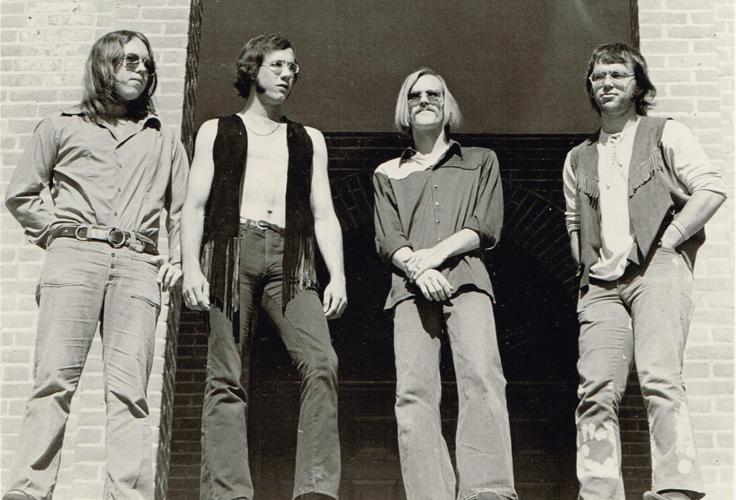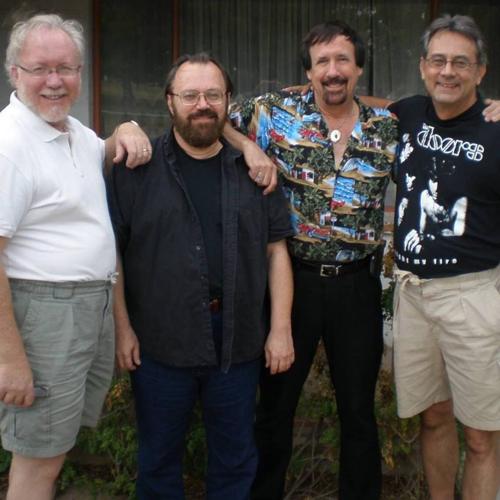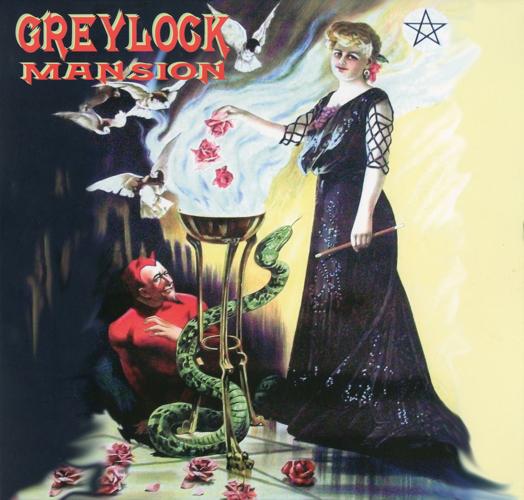Everyone knew Merl Reagle as the puzzle guy, the Tucsonan who made it big on a national stage as the constructor of puzzles published in newspapers around the country including the Arizona Daily Star.
But what many didn’t know about the Catalina High School graduate, who died in August 2015 at age 65 from acute pancreatitis, was his life as a would-be rock star.
Back in high school and for a few years after while he was attending the University of Arizona, Reagle was the chief songwriter and creative force behind Greylock Mansion, a dark, brooding late-1960s band that in many ways was far ahead of its time. Borrowing influences from Iron Butterfly and the Doors, Reagle and his bandmates — drummer Bill Ball, bass player Aaron Zornes and guitarist Larry Lorenzen — were on the precipice of greatness that never quite materialized.
They had a regional hit record and at one point interest from Capitol Records to release two singles — that’s how they did it back then. But when it fell apart at the end of 1971, they decided that perhaps they had run their course.
The members went on to greatness outside of music, including Reagle, whose puzzles were syndicated in newspapers around the country.
And that would have been the end of the story if Tucson record collector and producer Steve Purdy had not come across a long forgotten 45 rpm recording of Greylock Mansion’s “Catafalque” in a Tucson DJ’s collection. Tucked among literally thousands of records was this dusty vinyl single, which he bought and became enamored with. So much so that Purdy reached out to Reagle three years ago and asked if he could include the song on “St. Albert’s Dream,” a compilation album of Vietnam era garage/psychedelic bands.
People who bought the album loved the song and Purdy said the feedback was remarkable.
So he went back to Reagle to see if there were any more gems waiting to be discovered.
Thus began the journey that led to this week’s release of “Greylock Mansion,” a nine-song vinyl collection that Purdy released on his Lysergic Sound Distributors label.
“When you consider that this album was done in 1968 or 1969 by a bunch of high school kids in Tucson, Arizona, that was in the middle of nowhere, that was outstanding,” said Purdy. “If they had had better promotion they would have been household names.”
Ball said that had been the plan when he joined Greylock Mansion in 1968, a couple years into the psychedelic rock garage band’s run.
“We were going to be as big as anybody. We were going to be known,” he said. “One of our lines was we don’t want to be known just in Tucson. We don’t want to be known just in Arizona or in the United States. We want to be known internationally.”
“We spent our Tucson teenage and early UA years touring and performing ... (spending) many many nights in Merl’s dad’s pickup truck hauling our band equipment around Arizona as our manager — the late Perry Baker — promoted us as a heavy-rock alternative to the Doors, Iron Butterfly, Deep Purple, et cetera,” Zornes recalled at Reagle’s memorial service in 2015. “We even had regional hit records — 45 singles then — and we were the first opening act at the first official concert at the Tucson Community Center in the ’70s, opening for Ike & Tina Turner.”
In the summer of 1970, Greylock Mansion had a huge regional hit with their song “Amazon.” The band members, all barely into their 20s, were playing gigs in New Mexico and Phoenix. Their song was being played on the radio — it was the pre-corporate radio world, when playlists were determined by DJs — and it was being sold at record stores.
The song’s success led to a flirtation with Capitol Records, which dangled the prospect of a record deal. But Capitol wanted to install its own lead vocalist, so Ball said he and boys walked out.
They also had been entertaining an offer from a Bakersfield, California, startup label affiliated with Buck Owens. They sent the label, a planned rock offshoot of the country singer’s production company, demos with songs to be considered for an album project. But when the label never materialized, a disgruntled producer fled with the demos.
The band continued playing gigs until late 1971 before deciding it was time to pursue their adult lives.
“We weren’t one-trick ponies. Everybody got degrees. A couple of us got master’s degrees. We had other things we could do,” said Ball, who never really left music. He still plays regularly with Still Cruisin’, a 1950s-’70s cover band.
In addition to his syndicated work, Reagle published several puzzle books. Zornes took his University of Arizona computer science master’s degrees to California, where he became a leading architect and “godfather” of the $15 billion global master data management industry. Farrell Wymore, who replaced Lorenzen in the band’s final few years, worked in engineering and designed guitar amps for Fender, while Ball worked as an ombudsman and later director of transportation for Tucson Unified School District.
Purdy said Reagle was initially hesitant about the idea of putting out a Greylock Mansion album, but his wife, Marie Haley, finally convinced him. Haley said she reminded Reagle of his reluctance years earlier to putting out puzzle books and how his doubts turned out to be unfounded. The books became big sellers.
“He had a god-given gift for music. It was like a Mozart kind of gift,” Haley said from her Florida home, where the couple had lived for years. “He also had a gift for words and crosswords and humor. He took that road … and was very successful at it, but not a week would go by without him saying, ‘I hope I don’t die before people hear my music.’”
When Reagle agreed to the project, Purdy turned to Ball, who had kept a second set of those demos they sent to Bakersfield. They were recorded on two-track reel-to-reel tapes that Ball packed away in a closet. Every time he moved over the nearly four decades since they had made the recordings in a long-gone Tucson studio, he would haul along the tapes.
After years of sitting around collecting dust, parts of the recordings were damaged. Ball said 19 of 25 songs were saved and digitized. Of those, Purdy selected nine for the album, ranging from the almost Beach Boys-esque poppy “Over My Shoulder” to the somewhat twisted “Pretty for Petting.”
Reagle’s organ adds eerie undertones to “Catafalque,” the song that got this whole thing started for Purdy, and “Sanctum Sanctorum,” in which Reagle’s richly dark baritone sounds Vincent Price-esque. The album borrows influences from the heaviest rock acts of the day — mainly the Doors and Iron Butterfly. But listen closely and you hear flashes of present day death metal. The taunt of the organ and the howl of Reagle’s metal-esque vocals on “Mars” hint at what could’ve been had Greylock Mansion lived out its full potential.
“When you are lucky enough to find something like this that is not really known and done by people who are competent, that’s what guys like me dream about,” Purdy said of the Reagle’s songwriting and the band’s performance. “This guy literally was a genius in many different ways. His crosswords, his music. I want his music to be known, too.”






